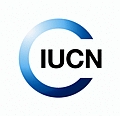A report released today identifies 13 of the richest and most vulnerable places in the Arctic Ocean that should be considered for protection as summer sea ice melts and industrial activity expands into newly accessible areas.
The Bering Strait, Chukchi Beaufort Coast, Barents Sea Coast and Great Siberian Polynya are among the hotspots, according to the report, released by the International Union for Conservation of Nature (IUCN) and the Natural Resources Defense Council (NRDC). This is the first-ever Arctic-wide identification of areas most important to Arctic marine life and vulnerable to additional stress on top of that related to global warming, loss of sea ice and ocean acidification.
The Arctic Ocean supports a unique array of polar-adapted wildlife – from polar bears and whales to seals, walruses and sea birds. Many of the four million people living in the Arctic rely on these animals for nutritional and cultural sustenance.
The areas identified in the report are unique or particularly rare; contain threatened, endangered or declining species and habitats; are especially vulnerable, fragile, or slow to recover; or meet other internationally recognized criteria. They represent top priorities out of a total 77 Arctic areas that should be considered for protection.
The 13 top priority areas featured in the report are: St. Lawrence Island, the Bering Strait, and Wrangel Island (off the US and the Russian Federation), Chukchi Beaufort Coast (US), Beaufort Coast/Cape Bathurst (Canada), Polar Pack Refugium, Lancaster Sound/North Water Polynya, Disko Bay/Store Hellefiskebanke (off Canada and Greenland), White Sea/Barents Sea Coast, Pechora Sea/Kara Gate, Novaya Zemlya, High Arctic Islands and Shelf, and Great Siberian Polynya (off Norway and the Russian Federation).The report reflects the findings of 34 leading scientists and representatives of indigenous communities in Arctic countries who gathered at a Scripps Institution of Oceanography workshop last year. As the Arctic warms, industrial activities such as shipping, fishing and oil and gas exploration are expanding into ocean places that were previously inaccessible due to the year-round presence of sea ice.“There is increasing interest in expanded economic activities in the Arctic,” says Thomas L. Laughlin, Deputy Head of IUCN’s Global Marine and Polar Programme. “The information and maps we have available now will allow governments and the international community to make the right choices regarding the conservation and use of the natural resources of the Arctic.”“The Arctic Ocean is the last untouched frontier,” says Lisa Speer, Director of the International Oceans Program at NRDC. “We have a short window of opportunity to plan for industrial development in a way that respects and protects important and fragile ocean places, wildlife and communities. As nations around the Arctic plan new offshore oil development, fishing and shipping, this report jumpstarts the process of identifying areas that should be considered for protection from the environmental consequences of those activities, including oil spills, pollution, and habitat degradation.”
The report also looks at the unique features of the High Seas of the Central Arctic Ocean, an area of international waters at the top of the world where marine life survives in an extreme environment of cold and darkness – outside any country’s jurisdiction. Globally unique, the high seas of the Central Arctic may be exceedingly vulnerable and slow to recover.
Read the full report online here: http://data.iucn.org/dbtw-wpd/edocs/Rep-2011-001.pdf
For more information please contact:
Borjana Pervan, IUCN Media Relations Officer, +41 798574072,borjana.pervan@iucn.org
Kate Slusark, NRDC, 212-727-4592, kslusark@nrdc.org
